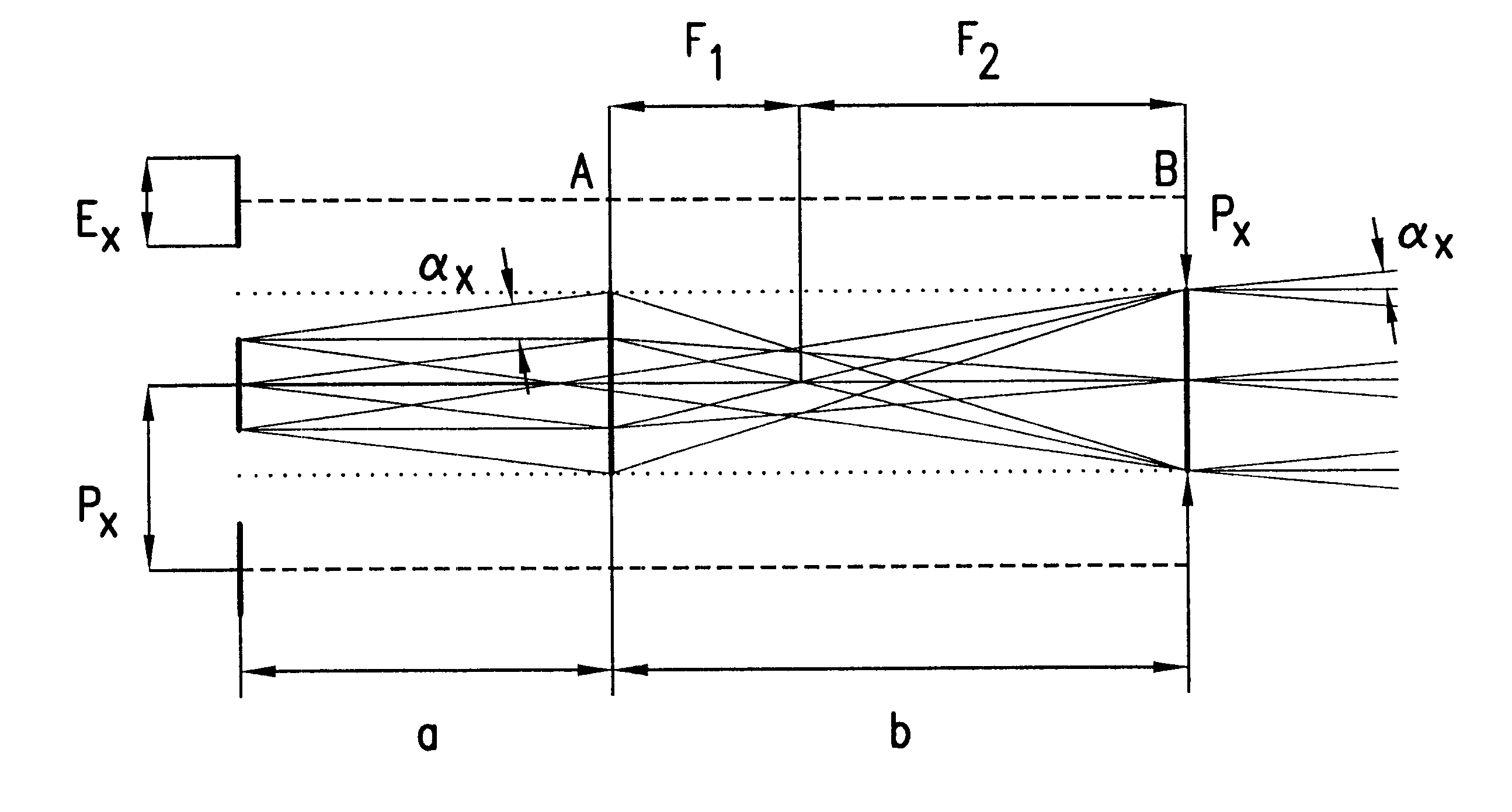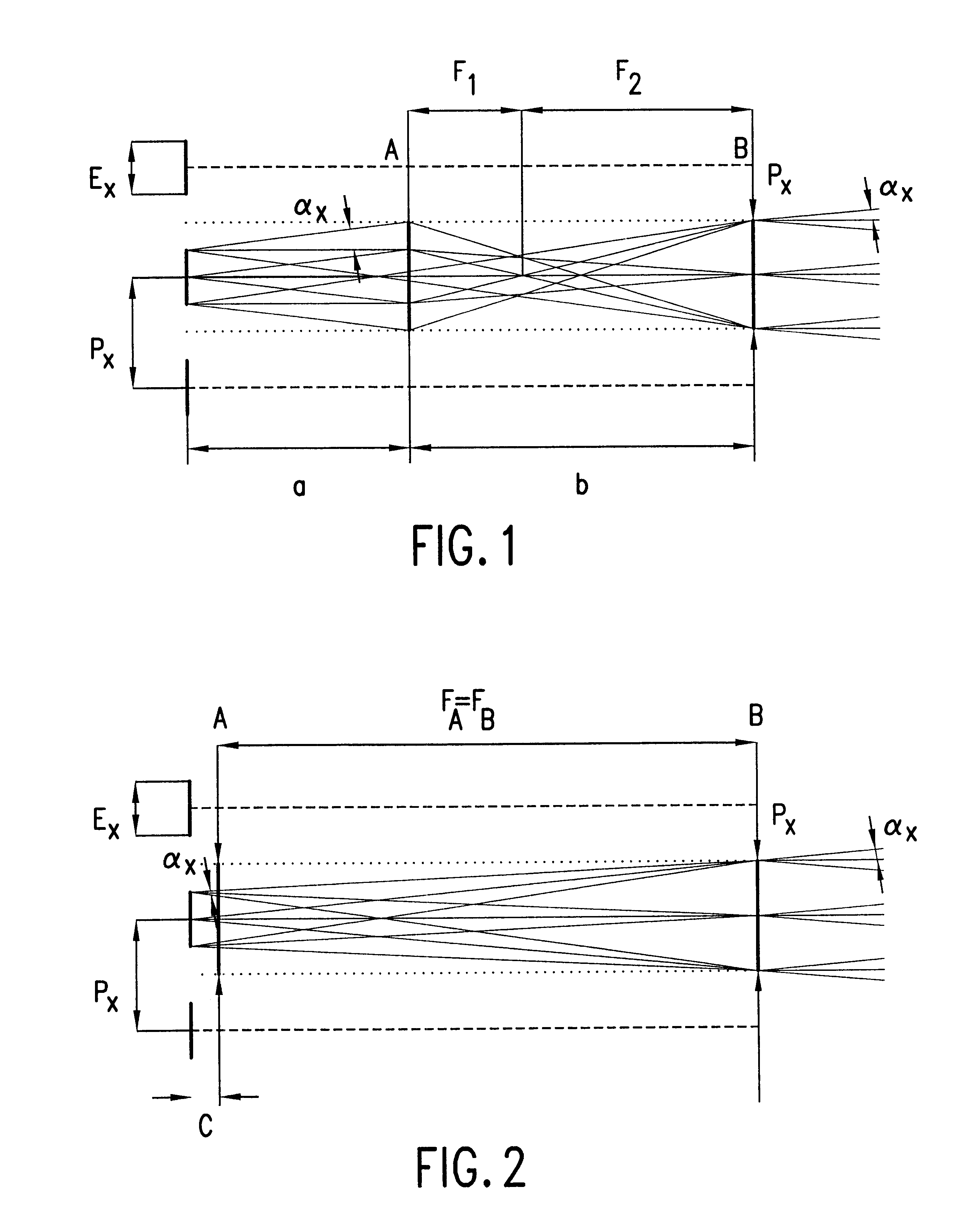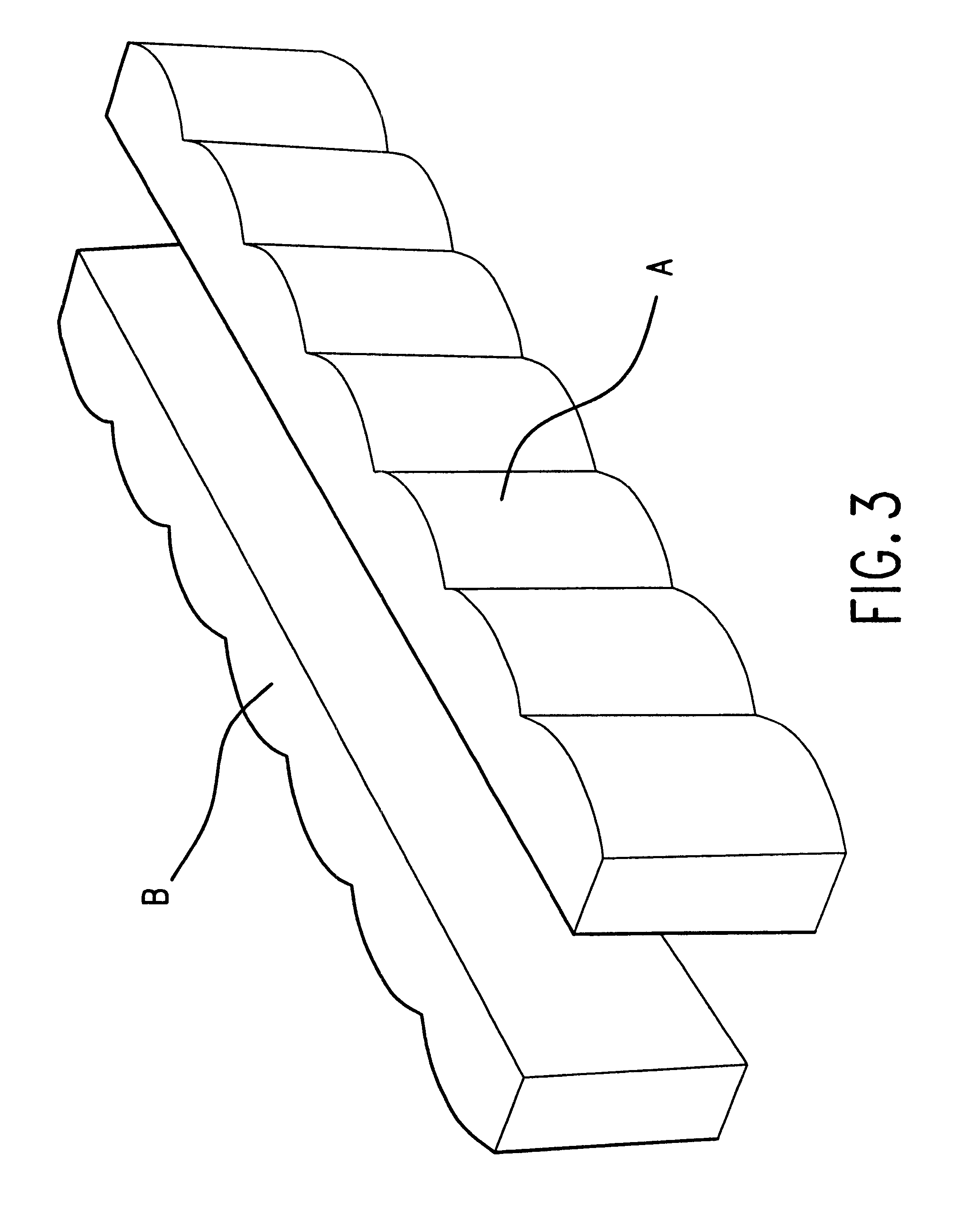Optical emitter array with collimating optics unit
an optical emitter array and optics technology, applied in the direction of optical wave guidance, semiconductor laser optical devices, lasers, etc., can solve the problems of large overall length, inability to separate divergence reduction for individual emitters, and fundamentally impossible to separate collimation with a single cylindrical lens array
- Summary
- Abstract
- Description
- Claims
- Application Information
AI Technical Summary
Benefits of technology
Problems solved by technology
Method used
Image
Examples
Embodiment Construction
In FIG. 1, a view in the y-axis direction is presented of an emitter array with a number of extended emission surfaces in the form of lines extending in the x-direction having width (E.sub.x) and center-to-center distance (P.sub.x). This is the typical situation for diode laser bars where frequently E.sub.x / P.sub.x.gtoreq.0.5.
The divergence in the x-direction, that is, along the slow-axis, is designated by .alpha..sub.x. Due to this divergence, the ray bundles, if they were to spread unhindered, begin to overlap at the overlapping distance (a).
At the distance (a), a first cylindrical-lens array (A) is positioned whose parallel oriented cylindrical-lens surfaces lie in the y-direction and have width (P.sub.x). The focal length of the array (A) is (F.sub.1).
A second cylindrical-lens array (B) with focal length (F.sub.2) is positioned at a distance (b=F.sub.1 +F.sub.2) from the first cylindrical-lens arrays (A) wherein it constitutes an imaging plane for (A) with respect to the emitte...
PUM
 Login to View More
Login to View More Abstract
Description
Claims
Application Information
 Login to View More
Login to View More - R&D
- Intellectual Property
- Life Sciences
- Materials
- Tech Scout
- Unparalleled Data Quality
- Higher Quality Content
- 60% Fewer Hallucinations
Browse by: Latest US Patents, China's latest patents, Technical Efficacy Thesaurus, Application Domain, Technology Topic, Popular Technical Reports.
© 2025 PatSnap. All rights reserved.Legal|Privacy policy|Modern Slavery Act Transparency Statement|Sitemap|About US| Contact US: help@patsnap.com



